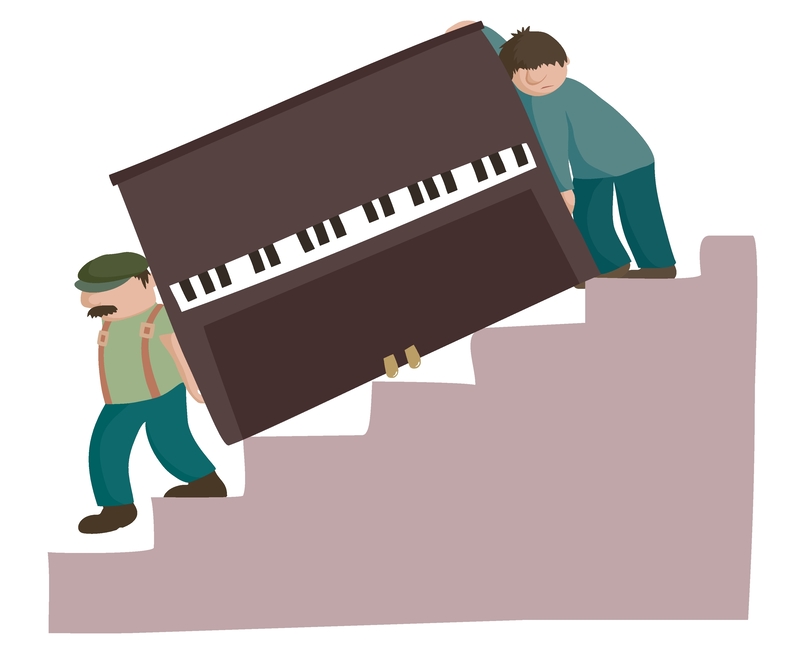Lifting Large Items by Yourself: What You Need to Know
Lifting large items by yourself can be both physically demanding and risky if you don't approach the task with proper planning and technique. Whether you are moving to a new house, rearranging your furniture, or need to shift heavy equipment, understanding the right methods and tools is crucial. In this comprehensive guide, we will cover essential tips, techniques, and equipment options for safely and efficiently lifting heavy objects on your own.
Why Care About Proper Lifting Techniques?
Improper heavy lifting is a major cause of injuries at home and in workplaces. Back pain, muscle strains, and even more serious injuries like herniated discs can occur. According to The Bureau of Labor Statistics, overexertion in lifting caused more than 25% of all workplace injuries in recent years.
Mastering the correct procedures for lifting large items without assistance will not only keep you safe but also help you move things more efficiently and without damaging your valuable possessions.

Assess The Item Before You Lift
Before attempting to move any large or heavy object, it's important to assess the size, weight, and shape of the item:
- Can you manage the weight safely on your own?
- Are there any handles or gripping points?
- Is the item fragile or does it have detachable parts?
- Are there obstacles between its current and destination location?
- Does it require special equipment, like a dolly or straps?
Never underestimate the difficulty of lifting oversized items solo. If you're unsure, consider asking for help or using professional moving services.
Essential Safety Preparations for Lifting Heavy Objects Alone
Preparation is key when moving large objects unassisted. Failing to prepare can significantly increase your risk of injury.
1. Clear Your Pathway
Remove all tripping hazards such as rugs, cables, toys, or other obstacles along your route. Open doors fully and ensure the pathway is as smooth and direct as possible.
2. Wear Proper Clothing and Footwear
- Sturdy shoes with good grip can prevent slips.
- Wear clothes that allow free movement and won't get caught on anything.
3. Warm Up Your Body
Stretches focusing on your back, shoulders, arms, and legs can reduce your risk of strains or pulls. Just like before a workout, warming up before lifting bulky items by yourself primes your muscles for the task.
How to Properly Lift Large Items By Yourself
Using the correct lifting technique greatly reduces your chance of injury when moving large objects on your own:
1. Get a Firm Grip
- If possible, wear gloves to improve grip and protect your hands.
- Use available handles, or create gripping points with straps or ropes.
2. Lift With Your Legs, Not Your Back
The most common mistake people make when lifting heavy things solo is rounding their back. Here's the best way:
- Stand close to the item with your feet shoulder-width apart.
- Bend your knees, not your waist.
- Keep your back straight, chest out, and look forward.
- Use your leg muscles to push yourself upwards as you lift, keeping the object close to your body.
- Avoid twisting - pivot with your feet if you need to turn.
3. Maintain Balance and Posture
- Hold the object at your waist level, not overhead or at arm's length.
- Distribute the weight evenly across your body.
- Use slow, controlled movements - never rush.
Optimal Tools and Equipment for Lifting Heavy Items Alone
Don't attempt to lift large items by yourself without the right equipment. Investing in a few helpful tools can make all the difference:
- Furniture Sliders: These pads reduce friction, letting you push rather than lift bulky furniture across floors easily.
- Dollies and Hand Trucks: Perfect for moving large boxes or appliances. Make sure you properly secure the item to the dolly before moving.
- Lifting Straps: Distribute the weight more evenly and free up your hands, making it easier to maneuver large objects.
- Moving Blankets: Help protect both the object and your flooring, and can also be placed underneath to slide very heavy items.
- Stair Rollers: Attach these for heavy loads that need to be moved up or down stairs.
How to Use Furniture Sliders for Moving Heavy Furniture Alone
- Carefully tilt or lift each corner of the furniture just enough to slide the pads underneath.
- Ensure each slider is positioned securely under the furniture leg or base.
- Slowly push the furniture in the desired direction, controlling its speed and route.
Additional Tips for Safe Solo Lifting of Large Items
Break Down the Item if Possible
Many large furniture items can be disassembled. Remove drawers, legs, or shelves to make them lighter and easier to move. Always keep any screws or hardware in a clearly labeled bag.
Slide, Don't Lift When You Can
If direct lifting isn't essential, sliding items on blankets or sliders is usually safer and requires less brute strength.
Use Leverage
When lifting one end of an item, use a sturdy stick or crowbar to help pry up the object, reducing the amount of manual force required.
Set Items Down Gently
After lifting large objects solo, avoid simply dropping them. Reverse your lifting technique to lower them safely, bending your knees and keeping your back straight.
Common Mistakes to Avoid When Lifting Large Items By Yourself
- Overestimating Your Strength: Just because you can lift something doesn't mean you should, especially if the weight distribution is awkward or bulky.
- Wearing Improper Footwear: Avoid sandals and loose shoes which may increase your risk of slipping or getting injured.
- Lifting With a Rounded Back: This puts huge stress on your spine and can cause lasting injury.
- Twisting Your Body While Carrying: Always turn your whole body to the direction you want to go.
- Not Taking Enough Breaks: If you feel tired or strained, set the item down and rest. Fatigue increases your risk of mistakes and injuries.
When to Avoid Lifting Heavy Things Alone
- If the item exceeds your own safe lifting limit (usually about 1/3 of your body weight for most untrained individuals).
- When the object is especially large or awkward, blocking your field of vision.
- If you have any history of back, neck, or joint issues.
- When stairs are involved with no railing or inadequate landing space.
- If the path is slippery, cluttered, or in any way unsafe.
Remember that knowing your own limits is an essential part of lifting and moving heavy items alone safely.
Why Use Proper Lifting Equipment?
Using equipment like moving straps, dollies, or furniture sliders improves both efficiency and safety. Not only can you prevent injuries, but your belongings are less likely to be damaged during the moving process. Renting moving equipment is an inexpensive preventative compared to the cost of medical treatment or furniture replacement.
Health Benefits of Lifting Large Items Carefully
When done correctly, lifting large objects single-handedly can offer a functional workout, strengthening your legs, arms, and core muscles. However, this does not substitute for a balanced fitness routine and should always be done within safety limits.
Post-Lifting Care: What To Do After Moving Heavy Items By Yourself
- Stretch Out: Focus on back, shoulders, arms and legs.
- Stay Hydrated: Moving heavy items is hard work!
- Ice any sore muscles: If you feel tender or inflamed, use ice or a cold compress for 10-15 mins.
- Monitor your body: If pain persists, particularly in the back or joints, seek medical attention.

Frequently Asked Questions About Lifting Large Items Alone
Is it ever safe to lift extremely heavy items by yourself?
Extremely heavy items, such as pianos, large appliances, or safes, should never be moved alone. Professional movers use specialized equipment and team lifting practices for a reason. If in doubt, always get help.
Are there special techniques for lifting large items up stairs?
Moving objects up stairs is significantly more dangerous. Using a stair-climbing dolly, strategically placed ramps, or teamwork is essential. Take your time, keep the item low to the stairs, and ensure stable footing at every step.
What can help improve my lifting ability?
Regular exercise focusing on leg, core, and back strength improves your ability to move large objects solo. Learning proper form and using the correct equipment also makes a huge difference.
Conclusion: Lifting Large Items By Yourself Safely
Lifting large items alone requires preparation, awareness, and caution. By following the expert tips above, you can significantly reduce your risk of injury and increase your efficiency. Always use the right gear, assess your route, and never push beyond your safe limits. If you're in doubt, seek help--your health is worth more than even the heaviest item.
With practice, patience, and the right tools, lifting heavy items by yourself can become a manageable and rewarding task.



